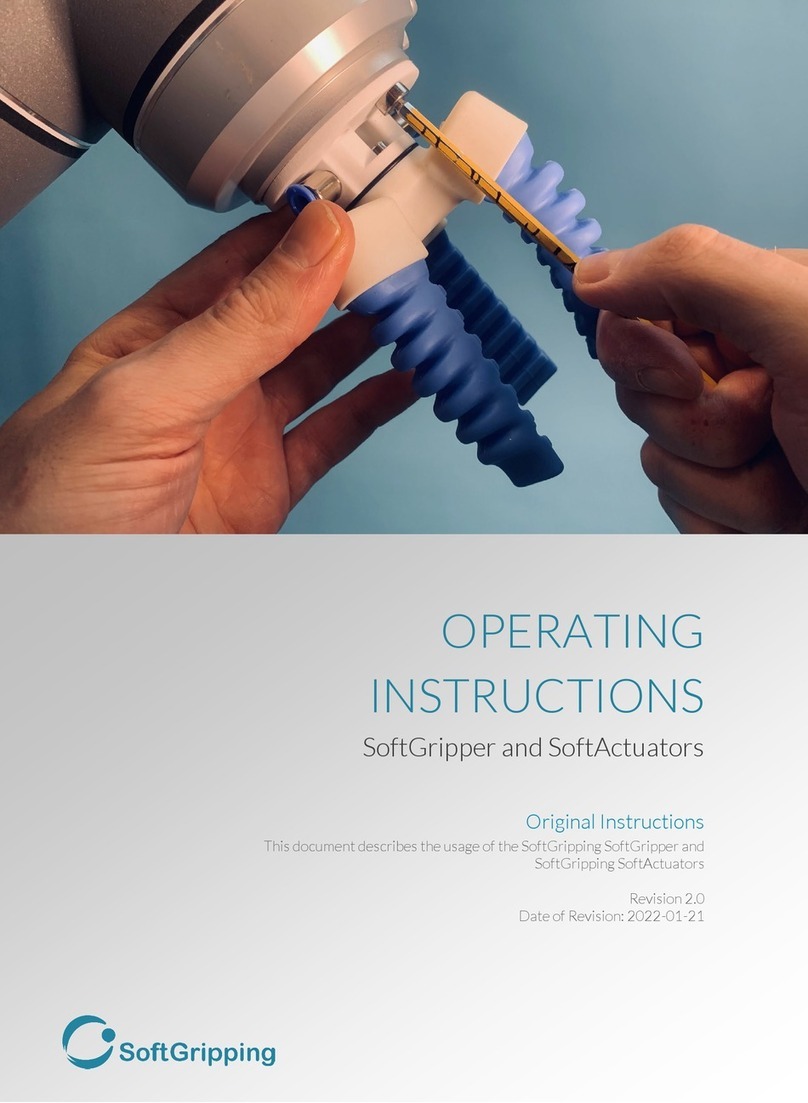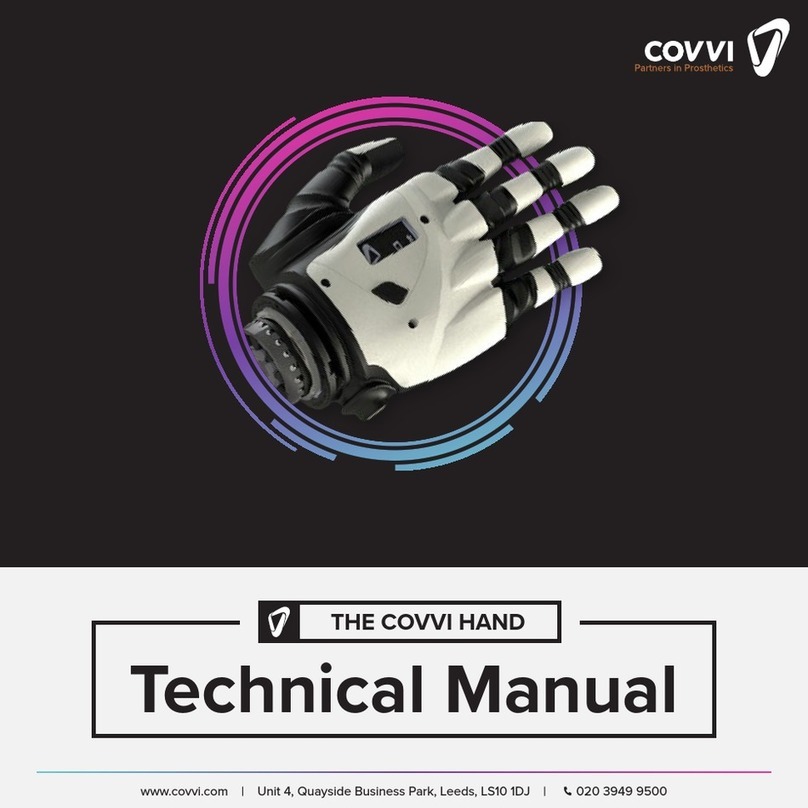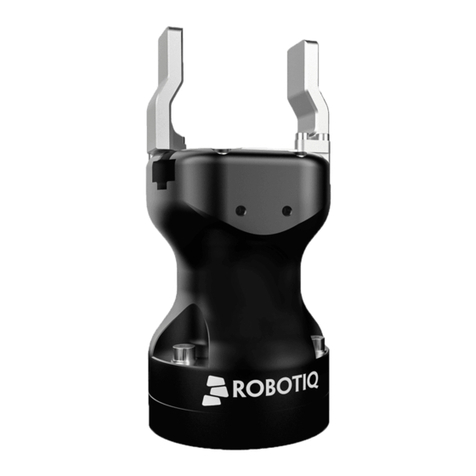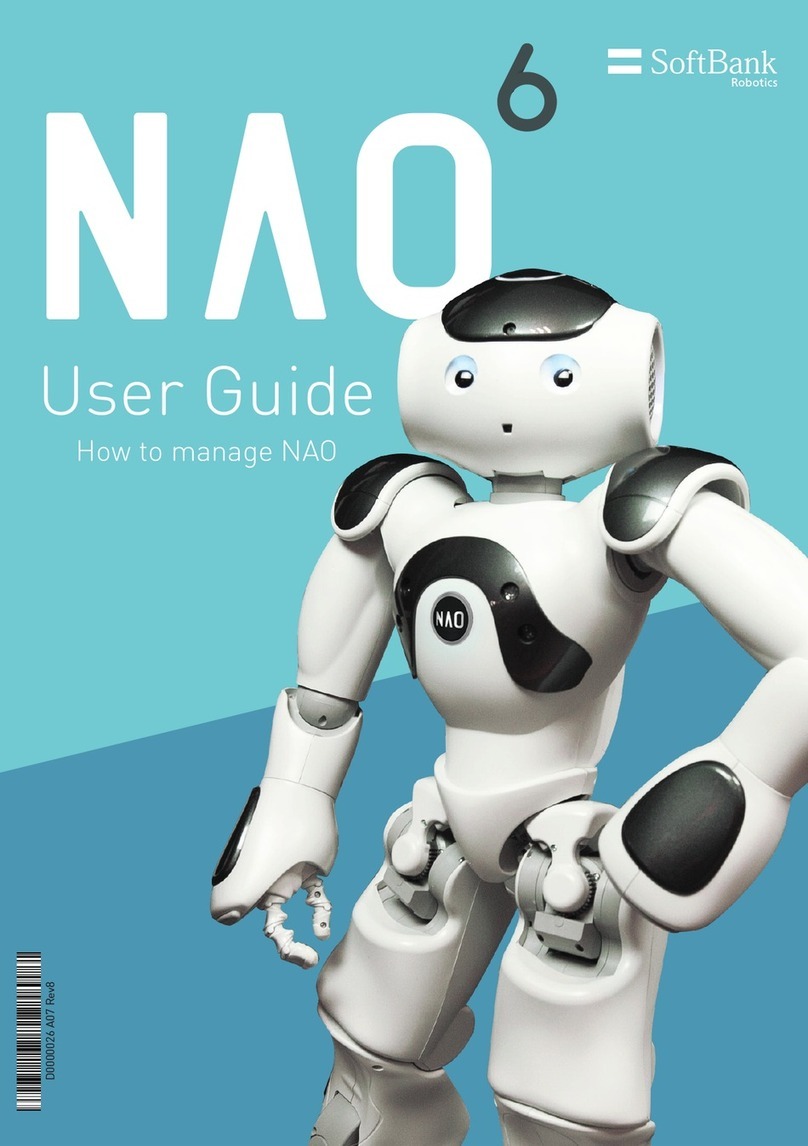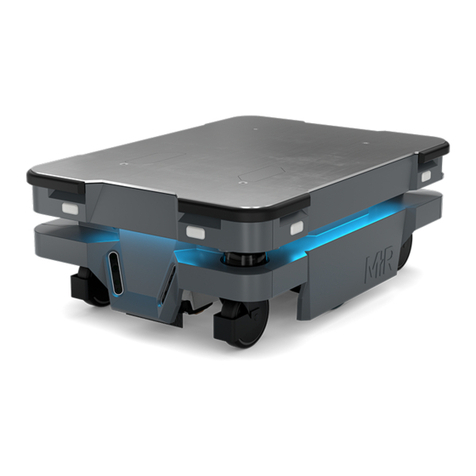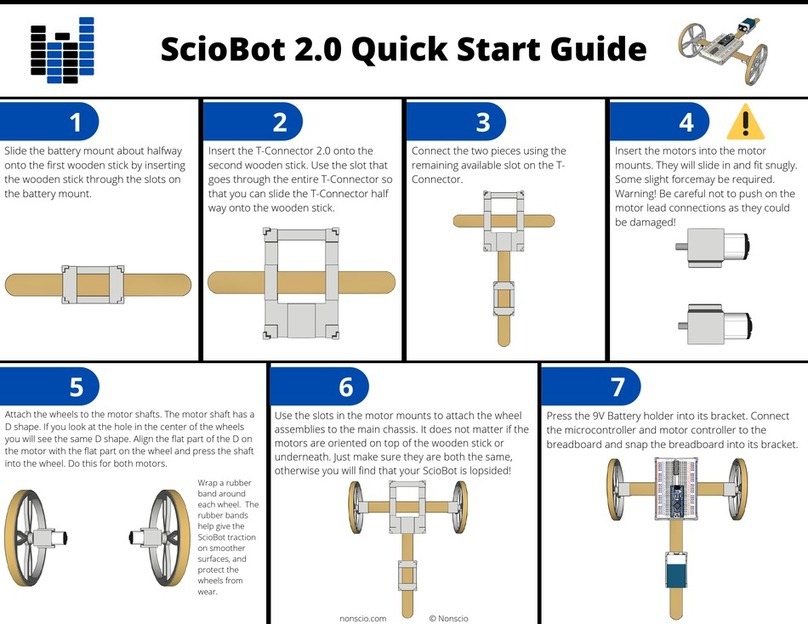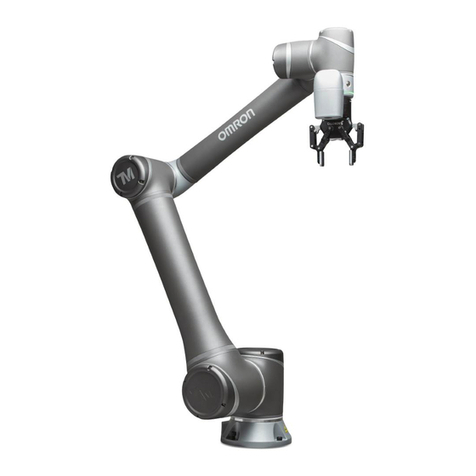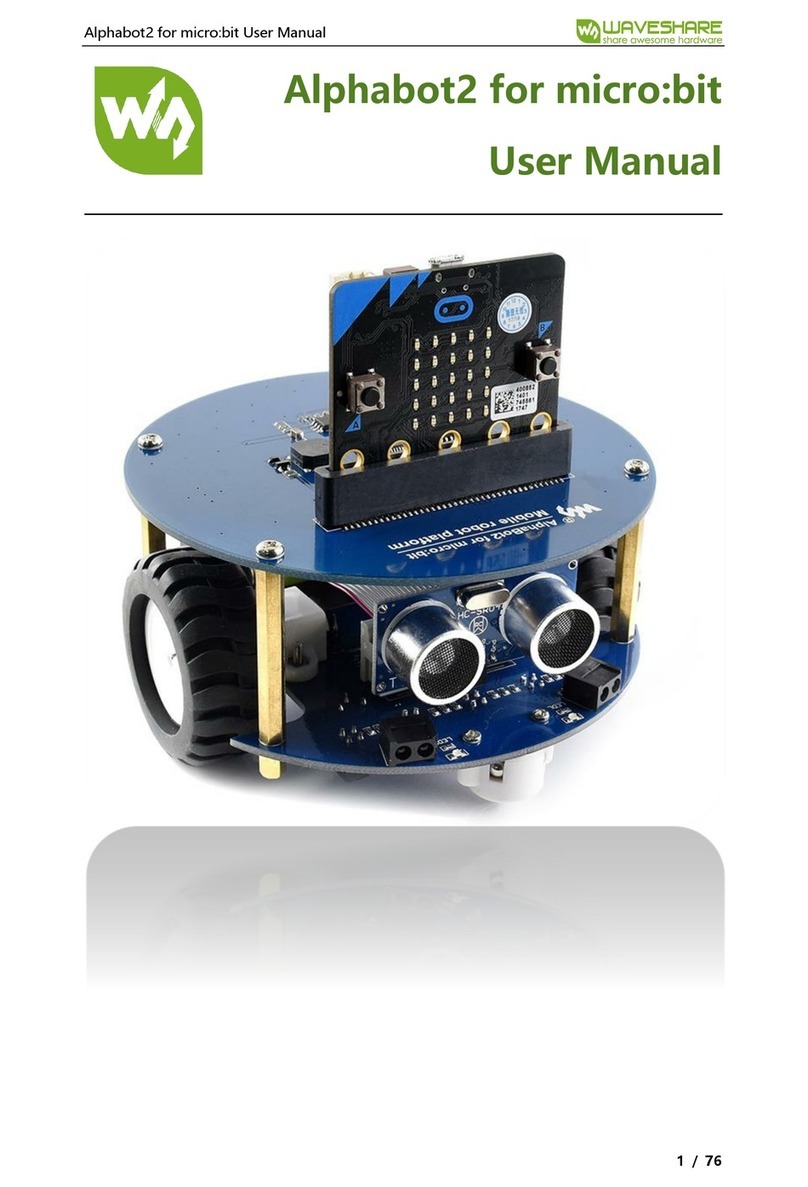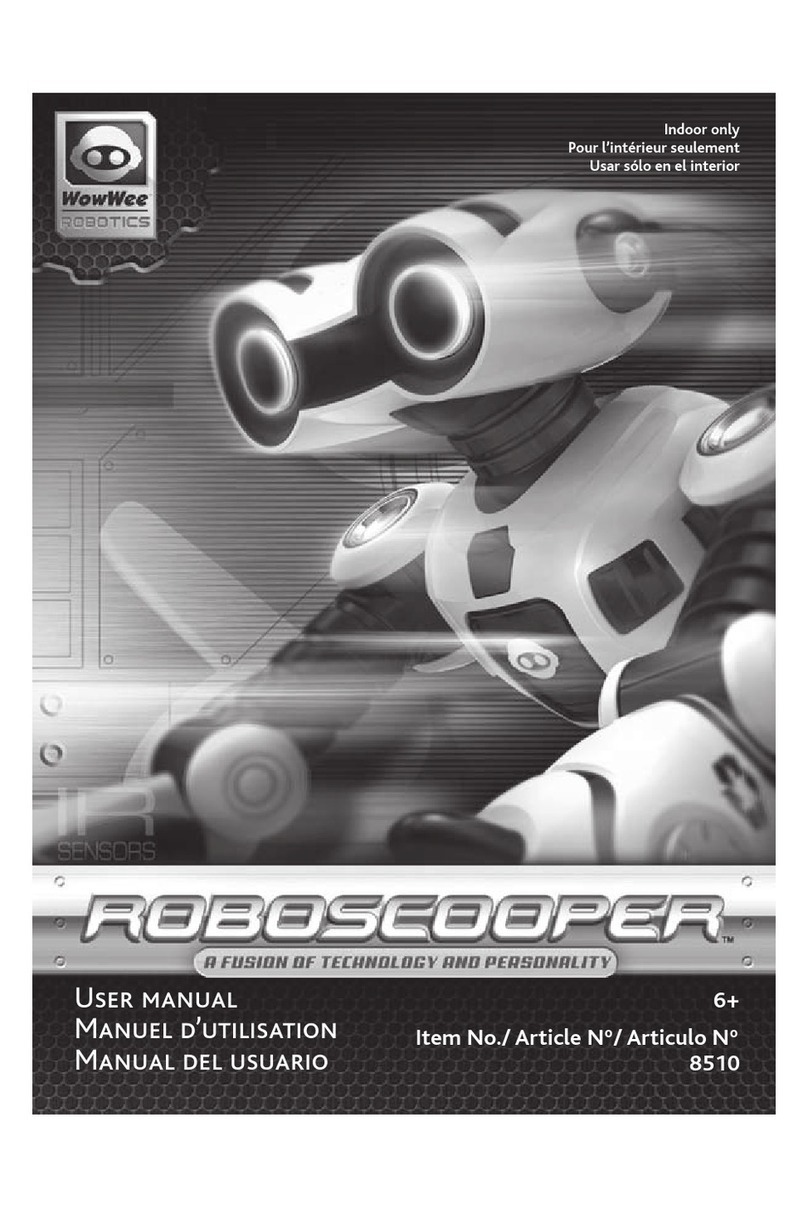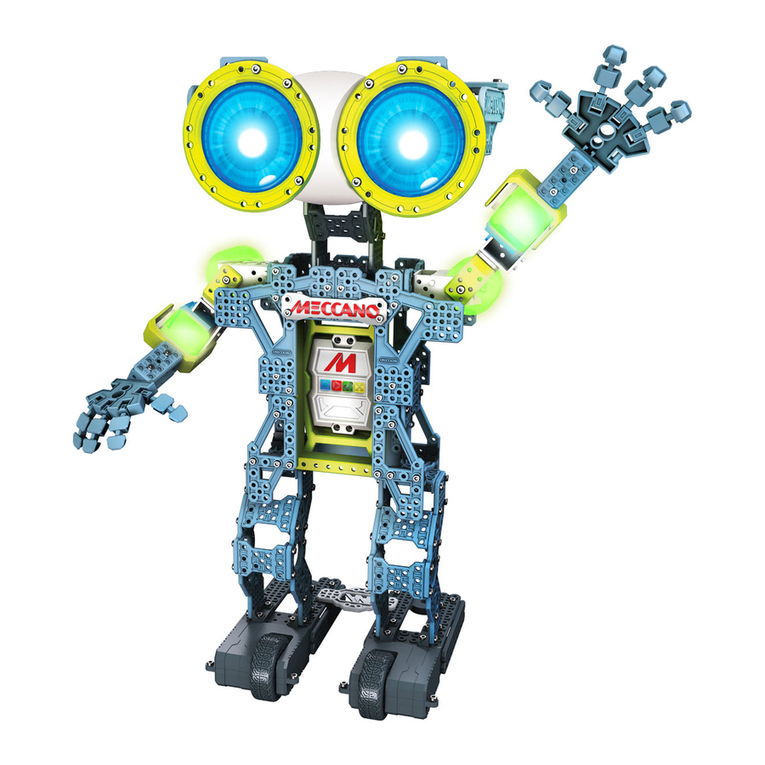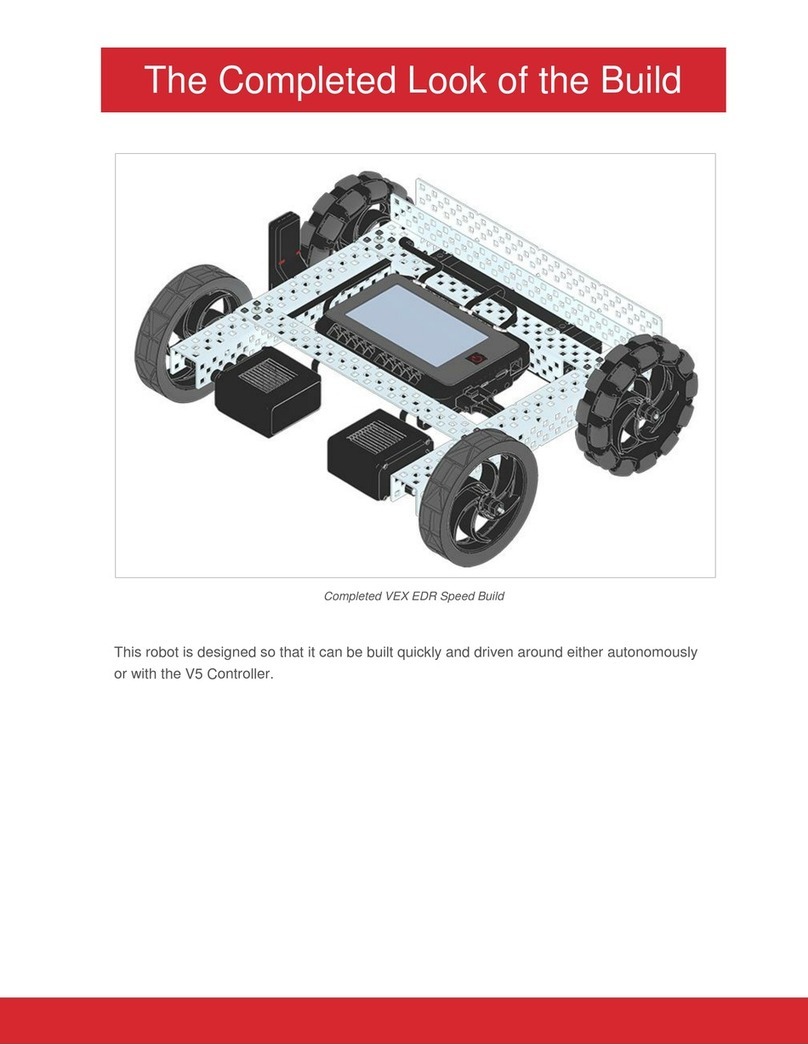HIRD GLASS WINLET 350TH User manual

Northern (Head Office)
Tel: +44 (0)1482 227333
Central
Tel: +44 (0)1302 341659
Southern
Tel: +44 (0)203 174 0658
OPERATOR MANUAL
www.hird.co.uk
WINLET 350TH
DISCLAIMER - ALL INSTRUCTIONS ARE SUPPLIED FROM MANUFACTURER AND WHERE CORRECT AT TIME OF PRINT
www.hird.co.uk

PRE1202
Daily Pre-Use Checklist
Glazing Robots
Northern (Head Office) Tel: +44 (0)1482 227333
Central Tel: +44 (0)1302 341659
Southern Tel: +44 (0)203 174 0658
www.hird.co.uk
Machine Model: Site Name:
Date Week Commencing: Fleet No: Address:
Inspected by:
Winlet 350TH
Result of Inspections: List defects or state “No Defects”
Signature: Name: Date:
Daily Pre-use Checks M T W T F S S COMMENTS
1Are all operators manuals present and readable
2Is the Report of Thorough Examination (LOLER) in date
3Complete a visual walk around / Inspection for any noticeable defects
4Are all safety information decals present and readable
Check the following components or areas for damage, or missing parts & unauthorised modifications:
5Hydraulic oil level
6Gauges and switches
7Electrical components, wiring, connectors,
8Hydraulic hoses
9Air hoses are free from defects
10 Vacuum pads are secure and free from defects
11 Vacuum pumps engage when switched on
12 Vacuum gauges are operational
13 Nut, bolts & other fasteners
14 Forklift mounting points
15 Charger
16 Counterweights are present and fitted
17 Audible / Visual warnings (Alarms & Beacons)
18 Controls, Buttons, Joysticks, Remote Control
19 Boom sections free from defects or debris
20 Drive function test
21 Lift function test
22 Emergency Stop button(s) function
23 Carry out full function test
Is the machine safe to use? (please circle)
YES YES YES YES YES YES YES
NO NO NO NO NO NO NO
Operator’s Initials

3
Version: 2016-UK-2
Important!
•Read these instructions carefully before use.
•Familiarize yourself with the running and lifting characteristics of the
window robot, and
•How it behaves, before you start working with it, in order to be able to
use it safely, securely and effectively.
•Be aware that you, the user, are responsible for the correct use of the
window robot without endangering other people or property.
Index
Overview and Safety
4 Description
5 Safety instructions
6 Operation and safety
7 Safety test (before starting)
Use of Winlet
8 Lifting and handling
9 Handling of load (use of hydraulic cylinders)
Service/maintenance
10 Storage and lifting of Winlet 350TH
10 Servicing
10 Troubleshooting
11 Charging the batteries
11 Service/maintenance
13 Specifications
14 CE –EU declaration of conformity

4
Version: 2016-UK-2
Description
Item Designation
1 Protective screen
2 Fork Pockets
3 Locking pin for fork pockets
4 Boom with telescopic arm
5 Lifting tower
6 Vacuum boom
7 Control Panel
Dear Customer
Thank you for choosing a GMV A/S product. We have more than 20 years of experience in the construction
and manufacturing industry as well as other industry. We develop, produce and sell equipment for materials
handling designed for industrial use.
For further information, see www.gmvas.dk
Description
Winlet 350TH is a battery-operated window robot with a lifting capacity of 350 kg designed to be used on
the forks of a building machine. The robot is made by GMV A/S to facilitate conveying and mounting of
window elements or similar sealed items. Winlet 350TH can also be supplied with other specially made lifting
and handling fixtures to enable conveying and handling of other types of heavy loads. Winlet 350TH has an
advanced, electro-hydraulic system for handling the items to be lifted.
The machine is supplied with an integrated vacuum system as standard. Please contact us concerning your
conveying needs for items requiring specially made lifting and handling fixtures.
1
5
4
5
7
2
7
6
4
3
8

5
Version: 2016-UK-2
Safety instructions
General
•The window robot must be used as described in these instructions and in accordance with the general safety regulations
applicable in the workplace and in the country where the Winlet 350TH is used.
•Always wear steel-capped safety footwear when working with the Winlet 350TH. Depending on the workplace and the
type of load, a helmet and protective gloves may also be required.
•To prevent unauthorized personnel from using the window robot, never leave it with the key in the ignition.
•Before use, check that the Winlet 350TH is not damaged in any way that could impair safety.
•Never use the Winlet 350TH when the battery indicator is lit up red, as this could ruin the battery. Instead, charge as
described elsewhere in this manual.
•Never use or store the Winlet 350TH outdoors in wet weather. The machine is designed for use in temperatures ranging
from -10 °C to +40 °C.
Installation on Building machine
•Winlet 350TH must be securely fastened to the forks of the building machine to avoid that the Winlet 350TH can slide off
and harm persons or material.
•To securely fasten Winlet 350TH to the forks, the forks must be all the way in the Winlet 350TH and the bolts (supplied
with Winlet 350TH) must be securely fastened behind the forks and locked with Locking Pin.
•The user must be aware of the surroundings when using the window robot, and must allow a generous safety margin in
case unexpected situations arise.
•Plan your path of travel and make sure it is clear and negotiable. Avoid surfaces where there is a risk that the window
robot could overturn or slide. Exercise great care at corners and junctions.
•Be aware that high speed in constricted spaces represents a major safety risk.
•Always drive with the load lowered.
•Only use the Winlet 350 in locations with satisfactory lighting.
Vacuum
•The Winlet 350TH is designed to transport and mount window elements and other sealed elements as well as other
materials using the specialist equipment supplied.
•Always lift the item at its centre of gravity and in the centre; otherwise, the item may tear free from the suction plates.
•Only activate the vacuum function when the suction cups are placed on a sealed, dry, clean surface. Any other use can
damage the vacuum system.
Lifting and handling
•The Winlet 350TH has moving parts which could give rise to a risk of crushing; accordingly, when lifting and lowering
loads, it is important to ensure there is no one in the area of risk where crushing could occur.
•Never lift an item until a sufficient vacuum has been achieved. If the vacuum level diminishes, put down the item
immediately.
•Exercise great care when lifting and handling lifted items, as sudden movements or jolts can cause the item to break away
from the suction cups.
•Be particularly aware of the capacity limitations of the TeleVac and the building machine on which it is used.

6
Version: 2016-UK-2
Operation and safety
Safe attachments to the forks
Winlet 350TH must be securely fastened to the forks of
the building machine to avoid that Winlet 350TH can slide
off and harm persons and material.
To securely fasten Winlet 350TH to the forks, the forks
must be all the way in the Winlet 350TH and the bolts
(supplied with Winlet 350TH) must be securely fastened
behind the forks and locked with Locking Pin.
Winlet 350TH is equipped with a power switch which has a removable key. The power switch also functions
as emergency stop. As soon as the key is turned in the “OFF” position the power supply to the machine’s
functions turns off. The key switch is spring-loaded so that upon activation of the emergency stop, the key
switch remains in the OFF position. This will bring both hydraulic cylinders to an immediate stop. By
activating the emergency stop, there ALWAYS remains suction in the suction cups –however, one must be
especially alert when the vacuum pump for an emergency also lose power. Both vacuum circuits are
provided with individual vacuum tanks to ensure sufficient vacuum for at least five minutes if the system is
free of any leaks. The current level of vacuum in the suction cups can always be monitored on the 2 vacuum
gauges. When the vacuum level is 60% or more, the machine has full lifting capacity.
1
2
Description
Item. Designation
1 On/Off-switch - key contact / Emergency Stop
2 Vacuum gauges

7
Version: 2016-UK-2
Description
Item Designation
1 Choice of hydraulic cylinder
2 LED indicator –cylinder
3 Activation of vacuum
4 LED indicator –vacuum level
5 LED indicator –overload
6 LED indicator –on/off
7 Direction & speed regulator –
cylinders
Safety functions when lifting and handling
The Winlet 350TH is equipped with an operating panel from which all vacuum and hydraulic functions are
controlled. The integrated safety functions are:
•2-button safety operation of the machine's vacuum system. Both buttons must be activated at once
either to pick up a load or to put down a load.
•The double-circuit vacuum system of the machine is monitored by two vacuum stats which, via LED
lamps, give a signal if the vacuum is insufficient for safe lifting.
•LED lamps show which cylinder is active.
•Intelligent overload protection shows when the machine reaches the limits of its capacity.
Safety test (before lifting)
The window robot must be safety-tested daily before use. This test must be carried out without load.
Important! If any of the items do not pass the safety test, the machine must not be used!
•Carry out an inspection to ensure that the mechanical parts of the window robots are not worn or
damaged to such an extent that the safety of the machine is compromised.
•Check the window robot vacuum system for leaks:
Leak test process
Place all suction cups on a level, dry and airtight surface (e.g. a window). Start the Winlet 350TH at
the on/off button and wait until the red lamps go out on the operating panel. Now activate the
vacuum by engaging both buttons on the operating panel at the same time. Both vacuum meters
now show the current vacuum in each vacuum circuit. Once a full vacuum has been achieved in both
circuits (a vacuum level of approximately 75%), turn the Winlet 350TH off again at the on/off
button. Now look at both vacuum meters; the vacuum level must not drop more than 10% in the
course of 5 minutes.
If the vacuum loss is greater than 10% in 5 minutes, check all hose connections and tighten any
connections as required. Check the condition of the suction plates. The seals must not show any
signs of scratches.
1
2
3
3
7
6
5
4

8
Version: 2016-UK-2
Lifting and handling
Vacuum lift
The Winlet 350TH is equipped with an integrated double-circuit vacuum system with intelligent vacuum
monitoring, which gives an alarm to indicate insufficient vacuum level. The vacuum pump is equipped with
Power Save, to save the batteries when there is sufficient vacuum.
Using the vacuum function:
Start the Winlet 350TH with the on/off button. Press both buttons for the vacuum function on the operating
panel and wait a moment until both red LED lamps go out. During this time, a vacuum of at least 60% has
been created in the vacuum system.
Picking up a load.
Place the suction plates on the item. Press both buttons at the same time on the operating panel. The item
has been attached by suction once both vacuum meters show more than 60% and the red lamps have gone
out; only then can lifting and transporting proceed!
Make sure the vacuum level is above 60% in both circuits.
Always lift the item at its centre of gravity and in the centre; otherwise, the item may tear free from
the suction plates.
Conveying of load.
After attaching the item by suction, move the item to the desired position by driving the Building Machine.
Take note of the following points:
The working area must be clear of any people and/or object.
Danger of injury by collision!
Never step under a hovering load!
Danger of falling load!
If the vacuum level in only one of the 2 vacuum circuits drops below 60%, put the load down
immediately!
If one of the red lamps lights up, put the load down immediately!
Forks on duilding machine must always be in horizontal position. Do not use to Winlet 350TH in
any other position. Maximum angle of forks from Horizontal must not exceed +- 15
degrees. Use the hydraulic functions of Winlet 350TH instead to manipulate glass.
Putting down the load.
Convey the lifted item to the desired place, and put it down. When the load has been placed securely, press
both buttons on the operating panel simultaneously. Now the air can flow to the suction plates, and the load
will be released immediately. Now a new work process can be undertaken.
Make sure the load is placed securely and that it cannot slide after being put down!

9
Version: 2016-UK-2
Handling of load (use of hydraulic cylinders)
The Winlet 350TH is equipped with an electro-hydraulic system which makes it possible to move the lifting
arm of the machine in 4 different directions:
1. Main cylinder, which positions the item roughly in the vertical position.
2. Telescopic cylinder, which moves the item forward along the longitudinal axis of the machine.
3. Tilting cylinder, which moves items from a horizontal floor –to a horizontal ceiling (180
degrees).
4. Fine-adjustment cylinder, which moves the item in a 100% vertical line.
Winlet 350TH also has a multi-mobile front, which makes the item manually maneuverable in all
dimensions. The front can be shifted sideways, turned 90 degrees to right and left, and rotated 360 degrees,
without limitation.
Use of hydraulic cylinders
Press the desired cylinder on the operating panel. An LED lamp will now show the selected cylinder. The
cylinder can then be moved in the desired direction at the desired speed by engaging the direction and
speed regulator.
Take note of the following points:
The working area must be clear of any people and/or objects. Danger of injury by collision!
Never step under a hovering load! Danger from falling load!
If the vacuum level in only one of the 2 vacuum circuits drops below 60%, put the load down
immediately!
If one of the red lamps lights up, put the load down immediately!
Note: Be aware that the capacity of the machine is reduced when using the hydraulic cylinders.
The stated values are for reference. And based on a 100% level surface.

10
Version: 2016-UK-2
The Winlet 350TH is equipped with load monitoring whereby a red lamp flashes on the operating panel
when approaching the max. capacity in a given position. At this warning, all cylinders must be retracted. If
you continue running the cylinders "outwards", the warning lamp will remain on constantly and there is a
risk of the machine overturning. Note that engaging the main cylinder in the "upward-bound"
direction for a protracted period can cause the oil pressure in the overload protection to
increase, which, for safety reasons, limits the hydraulic function to enable retraction only. If
this happens, retract the main cylinder to restore all functions.
Using the multi-movable front
The front is individually locked against movement in the three directions in which the front is capable of
moving.
The front can:
•Shift sideways
•Turn 90 degrees to the right and left.
•Rotate 360 degrees without limitation.
Unlock the desired function by releasing the relevant latch. When the front has been brought to the
desired position the latch must always be reactivated.
Storage and lifting of Winlet 350TH
•After use, check the level of charge in the batteries via the battery indicator, and charge as required.
See below concerning instructions with regard to charging.
•Never use the Winlet 350TH when the battery indicator is lit up red.
Important! Batteries stored for a prolonged period must have a maintenance charge (be fully
charged), to avoid damage to the batteries.
•Turn off the window robot. To do so, turn the ignition key/press the off-button.
Important! When storing for an extended period, turn off the machine to avoid damaging the batteries.
This is because there is always a certain amount of current consumption as long as the ignition is on.
Servicing
Carry out regular checks of the window robot to ensure that it is error-free when it is to be used.
Check that:
•The mechanical parts of the window robot have not become worn or damaged to such an extent
that the safety or performance of the machine is compromised.
•The suction cups of the window robot have not become worn or damaged to such an extent that the
safety or performance of the machine is compromised.
•The operating panel is not damaged.
•There are no leaks from hydraulic pump, cylinders or
batteries.
•All visible electric cables and hydraulic hoses are intact.
Troubleshooting
If the window robot does not work,
check that:
• The ignition key/switch is in the correct
position.
• The batteries are not flat.
• The operating arm is not at the top
position.

11
Version: 2016-UK-2
Charging/batteries
Important! The Winlet 350TH contains batteries with battery acid. Exercise great care with any leaked
acid. Normally, acid can only leak if the machine overturns. If any acid comes into contact with skin or eyes,
flush with plenty of water, and seek medical advice if required.
General
•Never charge the Winlet 350TH if damage is evident on the battery charger connection cable. This
could be fatal!
•Charging must always be done at the designated site, which must be dry and well-ventilated. At this
site, there must be no sparks from angle grinders, open flames or smoking, for example.
•Do not start charging the batteries immediately after use. Allow the batteries to cool first.
•Batteries stored for a prolonged period must have a maintenance charge (be fully charged), to avoid
damage to the batteries.
Charging
•Always charge after use.
•Turn the machine off with the ignition key/at the off-button.
•Connect an earthed plug with voltage 230 V (110 V). Charging time is approximately 8 hours, if
the batteries are completely flat.
Service/maintenance
General
The Winlet 350TH is designed to cope with the demands and the environment extant at a construction site,
but its service life and safety can be reduced considerably if the stated service/maintenance items are not
complied with.
All mechanical joints must be checked at regular intervals to ensure that no components have worked loose.
In general, special attention is required after the initial hours of operation when the machine is brand-new,
as well as after the machine has been taken apart/any repairs.
Servicing by specialist personnel
As a minimum requirement, a full overhaul must be carried out by specialist personnel every 12 calendar
months. Contact GMV A/S for further information.
Cleaning
Clean the machine regularly with a damp sponge, brush or vacuum cleaner.
Important! Do not wash the machine with running water, as this could ruin the truck components.

12
Version: 2016-UK-2
Lubrication
The Winlet 350TH is primarily constructed using maintenance-free bearings in all moving parts. All these
parts must be kept free of dirt, but lubrication is not required. This means the machine should only be
lubricated with grease at the bearing?? joints as required:
Bearing liner –side shift
The two bearing liners in the side-shift
mechanism in the front are fitted with lubrication
nipples for a grease gun. To guarantee the
performance of the window robot and to avoid
unnecessary repair costs, it is important to
lubricate these lubrication nipples regularly and
as required.
Important! Be aware that all prolonged and repeated contact with oils and lubricants constitutes a risk to
health; whenever necessary, wear protective gloves and goggles when implementing the points below.
Maintenance of the hydraulic system
•Change the oil after every 1500 hours of operation or at least once a year (oil Gulf Harmony ZF HVI
32 or similar).
Maintenance of the vacuum system
•The vacuum pump contains wearing parts. If the pump cannot achieve a vacuum level of min. 70%
(-70 kPa), it must be replaced or serviced by qualified personnel.
•Do not dismantle the vacuum pump while it is under warranty –this would invalidate the warranty.
•The vacuum system is fitted with a filter. The filter is located in the machine's motor compartment,
beside the two vacuum tanks. The filter must be cleaned at appropriate intervals, depending very
much on how clean and particle-free the items being lifted are.
•The window robot's vacuum system must have all the hose clamps re-tightened as required.
Important! The screwed-on fittings must not be re-tightened because they are sealed
with floating, self-hardening thread sealant. Re-tightening them could give rise to a risk
of leakage. If they are accidentally re-tightened, the error must be rectified immediately
by re-sealing the fittings.

13
Version: 2016-UK-2
Sound pressure level
The sound pressure level of the machine has been tested with the machine's vacuum pump and hydraulic
pump running simultaneously. The following values were ascertained:
A-weighted sound pressure level: Below 70 dB(A)
C-weighted maximum sound pressure level: Below 63 Pa (130 dB compared to 20 µ Pa).
Specifications:
Max. load
350 kg
Width
840 mm
External length
1.850 mm
Own weight
400 kg
Min. extension (front bumper to suction cup)
290 mm
Min. extension (front bumper to suction cup)
790 mm
Max. height of centre lifting yoke
2.700 mm
Lateral displacement
100 mm
Fine hoisting in tower
500 mm
Rotation
360 degrees
Suction cups
6 x ø270 mm
Motor
24 Volt
Lifting-lowering function
Electro-hydraulic
Battery
24 Volt - 2 x 95 Ah
Charging –integral charger
230V (110V)

14
Version: 2016-UK-2
CE –EU Declaration of conformity
Manufacturer
Company name: GMV A/S
Address: Industriparken 1
Post code: DK-7182 Bredsten
Tel.: +45 7573 8247
Responsible for the technical dossier
Authorized to prepare the technical dossier:
Jesper Faurskov
GMV A/S
Industriparken 1
DK-7182 Bredsten
hereby declares that
Machine
Designation: Winlet
Type: 350TH
Machine no.:
a) conforms to the following Directive:
i. Machinery Directive 2006/42/EC
b) Manufactured in accordance with the following national/international standards and
technical specifications:
i. The Danish Working Environment Authority, "anvisninger om tekniske
hjælpemidler" (instructions concerning technical aids")
ii. The Danish Working Environment Authority, "meddelelser om tekniske
hjælpemidler" (notifications concerning technical aids")
iii. The Danish Working Environment Authority, "vejledninger om tekniske
hjælpemidler" (guidelines concerning technical aids")
c) Manufactured in partial accord with the following harmonized standards:
i. EN 13155-2003
Signature
Name: Jesper P. Faurskov
Title: Director
Company: GMV A/S
Date: ________________
Signature: ________________________________
Table of contents
Popular Robotics manuals by other brands
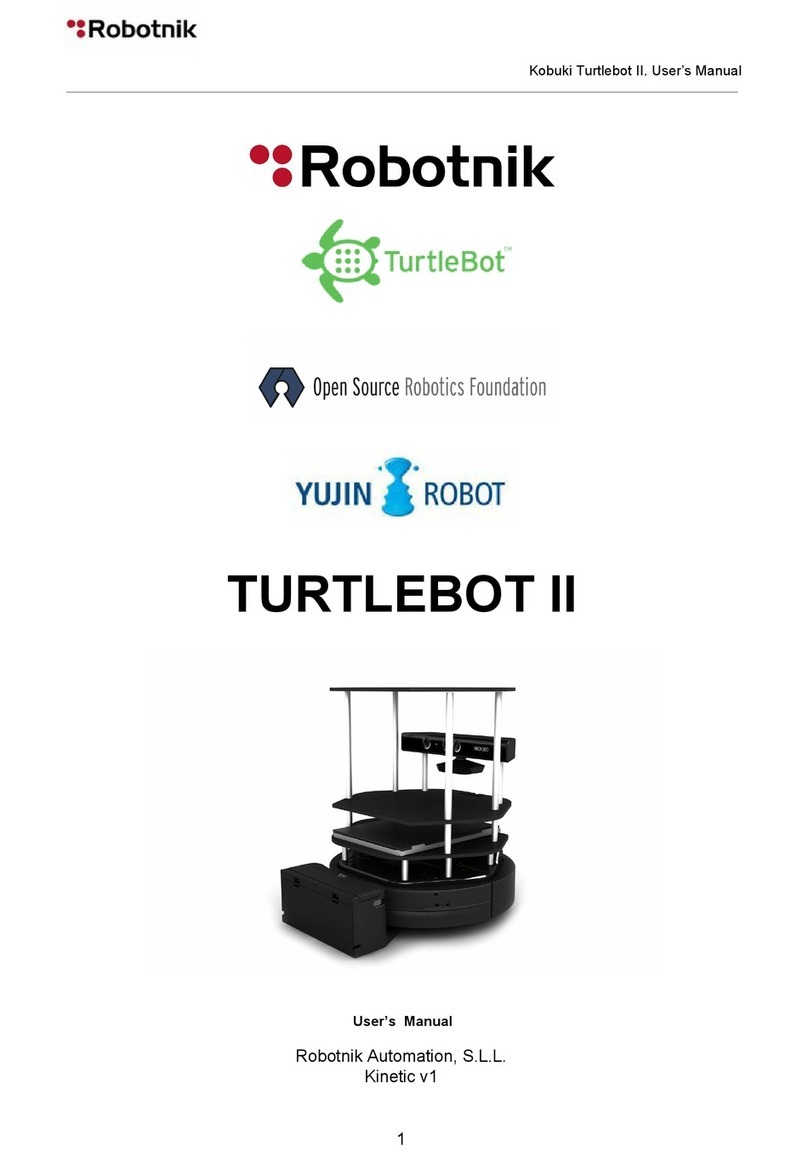
Robotnik
Robotnik Kobuki Turtlebot 2 user manual
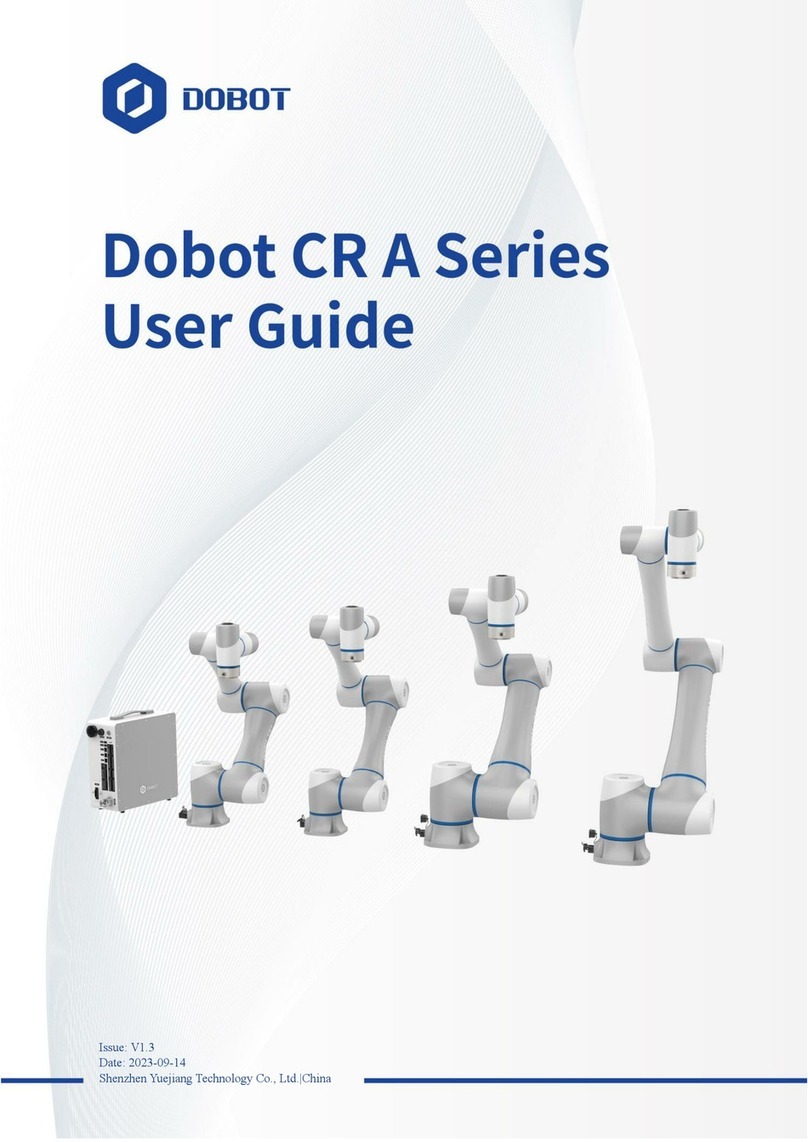
Dobot
Dobot CR A Series user guide
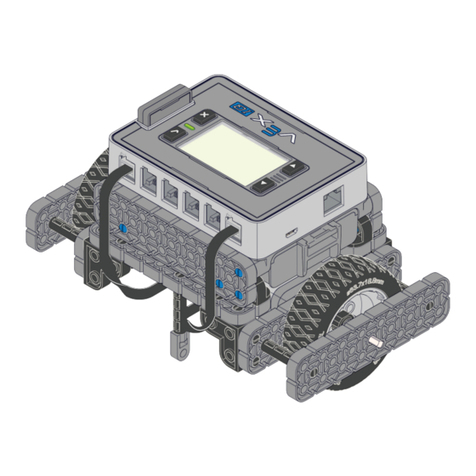
Vex Robotics
Vex Robotics Girl Powered VEX IQ Speed Build manual
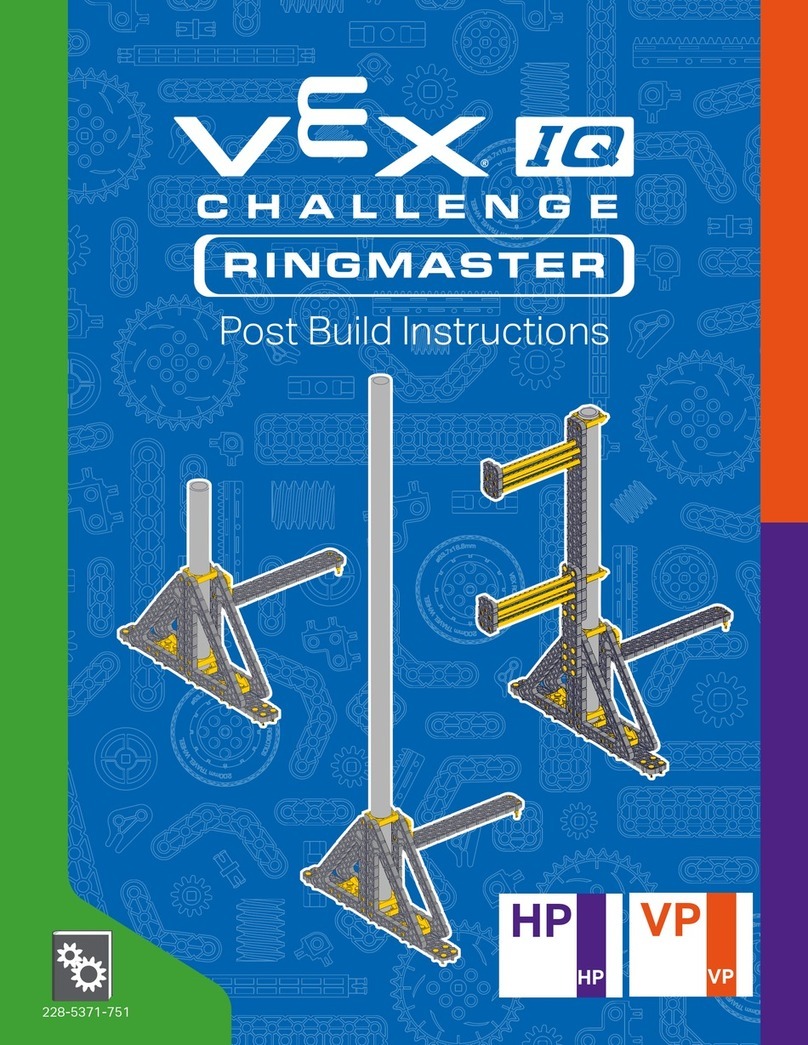
Vex Robotics
Vex Robotics RINGMASTER Post Build Instructions
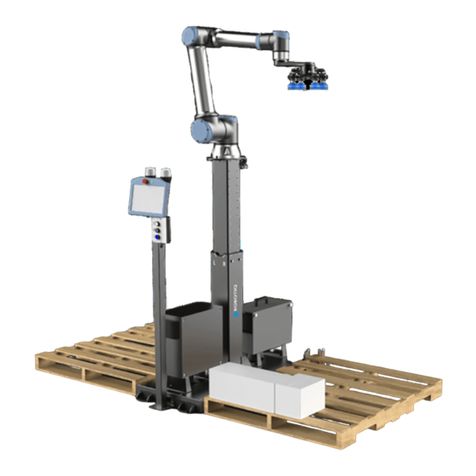
ROBOTIQ
ROBOTIQ PE Series Original Notice
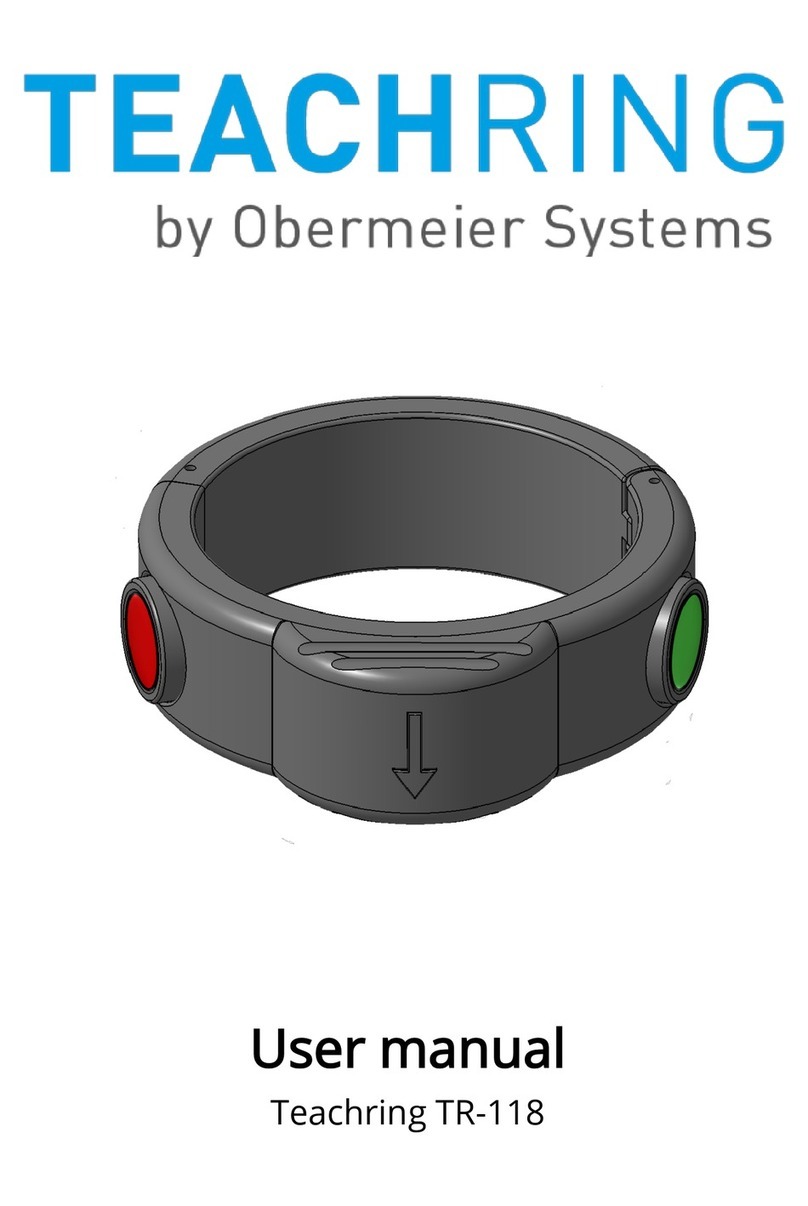
Obermeier Systems
Obermeier Systems Teachring TR-118 user manual
